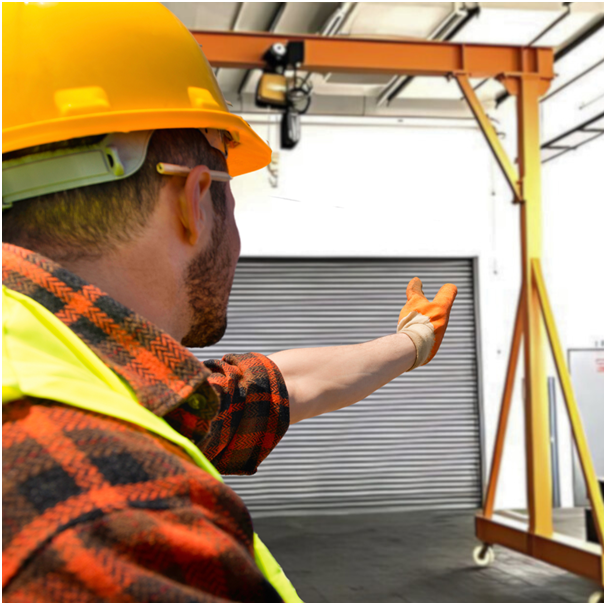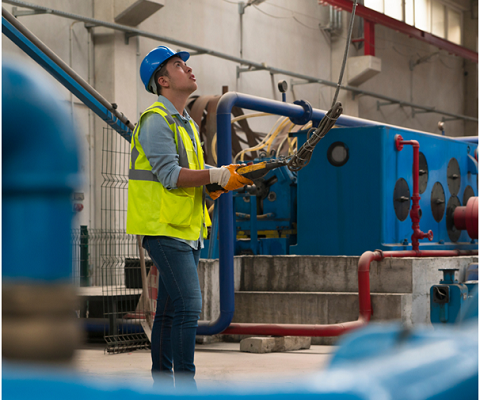Gantry cranes are essential pieces of material handling equipment that are used in a variety of industries to lift and move large loads. Among the different types of gantry cranes available, the A-frame gantry crane stands out for its versatility and efficiency. A mobile A-frame gantry crane and its stationary equivalent, however, differ greatly, with each providing special benefits and uses.
1. Mobility and Flexibility
One of the most apparent differences between a mobile A-frame gantry crane and a fixed one lies in their mobility. As the name suggests, a mobile A-frame gantry crane is designed with built-in wheels or casters, allowing for easy relocation and deployment in different areas within a facility or job site. This mobility offers greater flexibility in handling materials across various work zones without the need for permanent installation.
2. Installation and Setup
In contrast, a fixed A-frame gantry crane is securely anchored to the ground or a concrete foundation, providing stability and structural support for heavy lifting operations. The installation process for a fixed gantry crane involves precise positioning, anchoring, and assembly, often requiring professional expertise and equipment. Once installed, a fixed gantry crane remains in place, providing a reliable lifting solution for specific areas or workstations.
3. Load Capacity and Size
Another key distinction between mobile and fixed A-frame gantry cranes is their load capacity and size. Mobile gantry cranes typically have lower load capacities compared to their fixed counterparts, as they are designed for portability and versatility rather than heavy-duty lifting applications. Additionally, mobile A-frame gantry cranes tend to be smaller in size and footprint, making them ideal for confined spaces or temporary lifting tasks.
4. Versatility and Adaptability
Mobile A-frame gantry cranes offer greater versatility and adaptability in handling a wide range of materials and loads. Their mobility allows for quick and easy repositioning to accommodate changing workflow requirements or project demands. With adjustable height and span configurations, mobile gantry cranes can be tailored to suit specific lifting tasks, making them suitable for diverse industries such as construction, manufacturing, and warehousing.
5. Cost and Investment
When considering the cost and investment associated with A-frame gantry cranes, mobile variants generally offer a more affordable and cost-effective solution compared to fixed models. The lower upfront cost of mobile gantry cranes, coupled with their flexibility and portability, makes them an attractive option for businesses seeking efficient material handling solutions without significant capital expenditure.
6. Maintenance and Accessibility
Maintenance requirements also differ between mobile and fixed A-frame gantry cranes. While fixed gantry cranes may require periodic inspections and maintenance to ensure structural integrity and safety compliance, mobile gantry cranes often have simpler maintenance needs due to their modular design and fewer components. Additionally, the accessibility of mobile gantry cranes allows for easier inspection, servicing, and repairs, contributing to reduced downtime and operational disruptions.
7. Application and Usage Scenarios
The application and usage scenarios for mobile and fixed A-frame gantry cranes vary based on their design and capabilities. Mobile gantry cranes excel in environments where portability and flexibility are paramount, such as construction sites, temporary work areas, or outdoor facilities. They can be easily transported between job sites and adapted to different lifting tasks, making them invaluable for projects with changing requirements. On the other hand, fixed gantry cranes are well-suited for permanent installations in manufacturing facilities, warehouses, or industrial complexes, where consistent and reliable lifting operations are essential. Understanding the specific needs and operational context will help determine the most suitable type of A-frame gantry crane for a given application.
Conclusion
The choice between a mobile A-frame gantry crane and a fixed one depends on various factors, including mobility needs, load capacity requirements, space constraints, and budget considerations. While both types of gantry cranes serve the purpose of lifting and moving heavy loads, they offer distinct advantages and applications based on specific operational requirements. By understanding the differences between mobile and fixed A-frame gantry cranes, businesses can make informed decisions to optimise their material handling operations and enhance productivity.

For reliable A-frame gantry crane solutions tailored to your requirements, contact Shin Guan today.














Comments